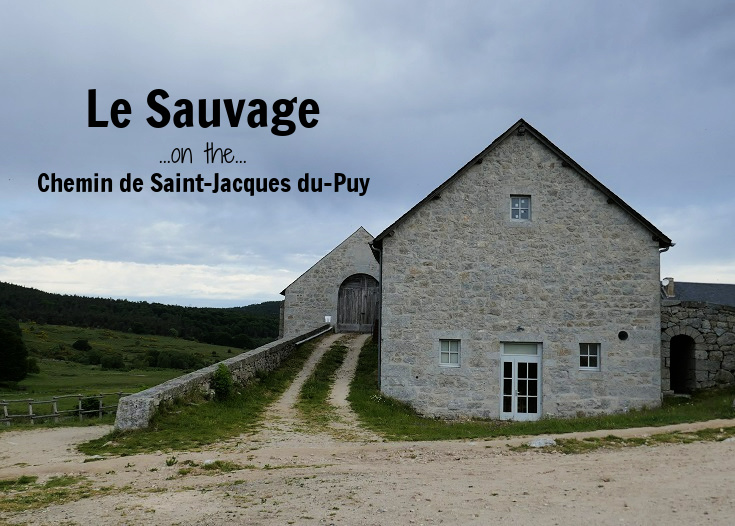
(Published July 2023, last updated April 2025)
A little over 60 kilometres (almost 40 miles) beyond Le Puy-en-Velay, the Chemin de Saint-Jacques de Compostelle reaches the gîte at Le Sauvage, considered by many as a ‘must-do’ overnight stop.
Historical records show that as long ago as the twelfth century, the road traversing the Margeride region of France near Le Sauvage was a popular thoroughfare for pilgrims arriving from Switzerland, Germany and Hungary and continuing on to Santiago in Spain.
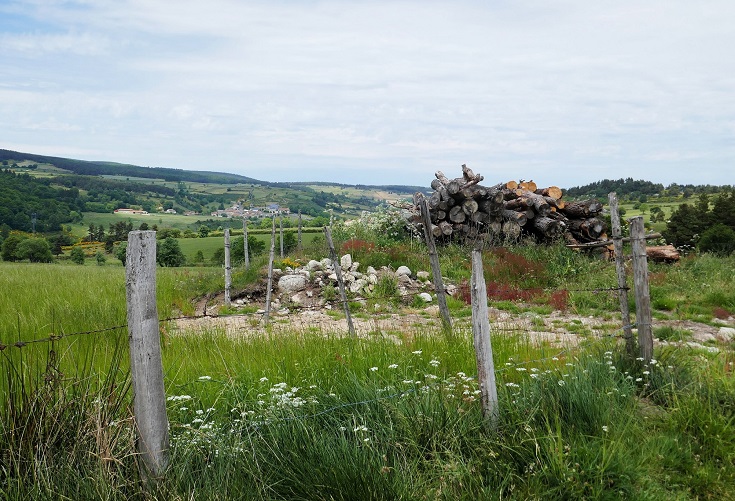
The spectacular landscapes of the Margeride region provide the perfect backdrop to a day’s walk (the village of Villeret-d’Apchier is in the distance)
To accommodate the weary travellers, the ruling bishop established a hostel and a small church, and in 1217 a law was passed by the cathedral in Le Puy-en-Velay which decreed the accommodation would be dedicated to serving sick and poor pilgrims.
Farmland around the hostel was used to graze livestock and grow crops which provided a constant supply of food for the pilgrims. Over time, barns were built to store grain and a mill and bread over were added. Large stone shelters protected the sheep and cattle.
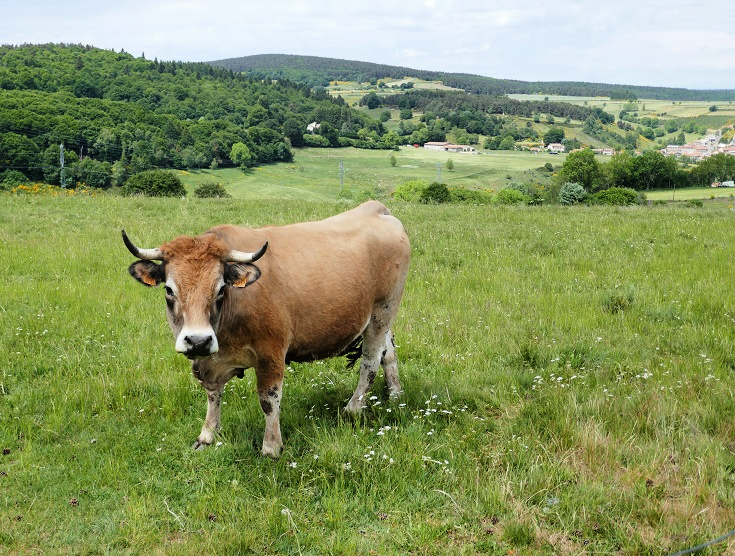
A friendly cow stops to say hello in the fields around Le Sauvage
In the sixteenth century, the cathedral in Le Puy-en-Velay relinquished control of the estate and the land was broken up and distributed among local farmers. At the same time, interest in the pilgrimage waned and fewer travellers arrived in need of food and shelter. As the economy faltered, many of the buildings fell into disrepair.
In the second half of the eighteenth century, the cathedral resumed control and many buildings were refurbished or rebuilt, and for the past decade, Le Sauvage has been a popular stop for walkers following the Chemin de Saint-Jacques du-Puy.
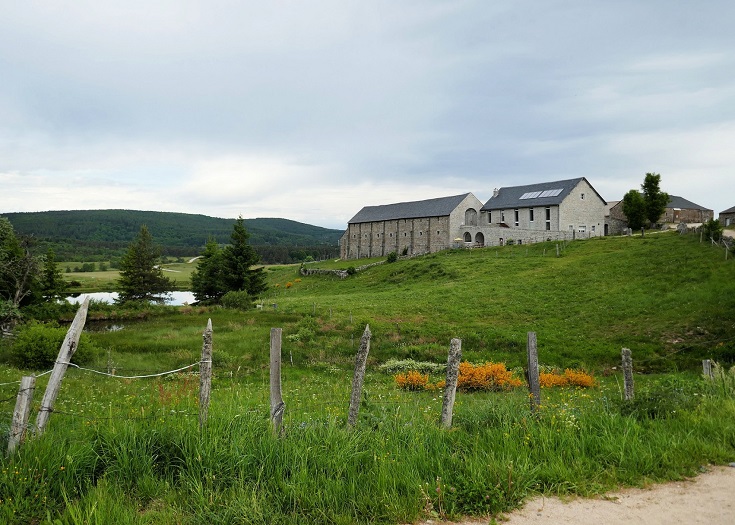
The Margeride countryside provides an idyllic setting for Gite le Sauvage en Gevaudan
The gîte Le Sauvage en Gévaudan can accommodate 41 people and, each night, serves a delicious meal prepared from food produced on the surrounding farms. Great importance is placed on sustainable farming practices and showing respect for the memory and spirit of the original hostel by providing pilgrims with a friendly welcome and a nourishing meal.
While a reservation is recommended for lunch, if you pass through Le Sauvage in the middle of the day, there is a range of local produce available at the store from which you can gather a tasty picnic basket.

Picnic tables beside Le Sauvage offer a pleasant spot to rest and enjoy a cold drink
If you are reasonably proficient in French, one of the highlights of an overnight stay at Le Sauvage will be the historical talk given (on most nights) by your host, Didier. Although my knowledge of the language is usually adequate, I struggled to follow along during the hour-long presentation.
Didier spoke of a time not so long ago, when the local council made plans to attract tourists and boost the local economy by developing a dinosaur-themed park on the land! Valéry Giscard d’Estaing (President of France from 1974 to 1981) whose family had ruled the neighbouring region of Estaing for many generations, was very much involved in the development process. But was he in favour of the park or did he work tirelessly to stop it? Much of the nuance was lost on me.
Thankfully, the plan was abandoned and the area remains a vast, wild and natural plain.
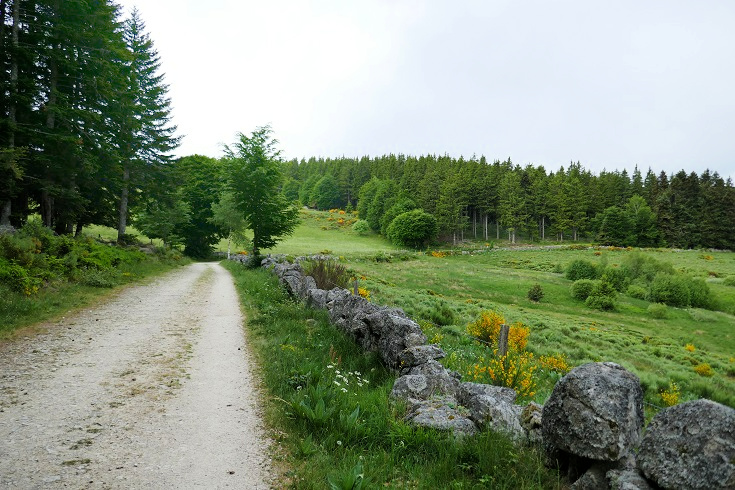
Leaving Le Sauvage on a Friday morning, headed for Aumont-Aubrac
Le Sauvage en Gévaudan is an iconic stop on the Chemin de Saint-Jacques and when I walked again in 2022, I was keen to experience a night there for myself. I contacted the gîte in the middle of March, hoping to reserve a bed for Wednesday 1 June. They were fully booked but offered me a bed for the following night which I accepted.
Did it live up to all the hype?
If you speak French fluently, you’ll enjoy the lively atmosphere, the camaraderie at the large communal dinner tables and the talk given by Didier (the parts I did understand were fascinating!).
As a non-native French speaker, I found the atmosphere a little boisterous and overwhelming. Although my dinner companions were patient with my limited French and did their best to include me in their conversations, the high noise level made it difficult to keep up. Despite being among forty or so friendly and welcoming walkers and staff, I felt somewhat isolated.

A six-bed dormitory at Le Sauvage en Gévaudan
Most of the rooms at Le Sauvage are six-bed dormitories, each with a shared bathroom. The rooms were large, clean and well-appointed, although there was only one power point for recharging phones and laptops. There are also some twin bed rooms (as I learned from my dinner companions).
Would I stay again? I am glad that I stayed the night at Le Sauvage in 2022 (I’m not one to die wondering), but now that I’ve done it once, I will probably choose somewhere else next time.
If you have your heart set on spending a night at the gîte, I recommend booking well in advance. If not, plan your itinerary in a way that suits you (my five and six-day itineraries do not stop at Le Sauvage) and know that there will be many other memorable nights along the way.
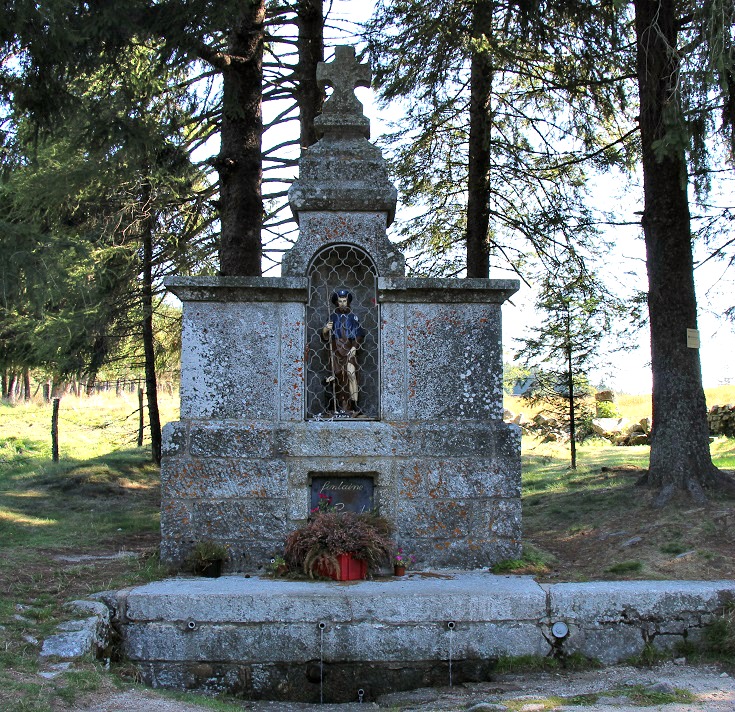
Fontaine de l’Oratoire Saint-Roch
One hour after leaving Le Sauvage, the Chemin de Saint-Jacques passes a small spring—Fontaine de l’Oratoire Saint-Roch. It is said that the water flowing from here is blessed, and pilgrims have been stopping to quench their thirst and fill their water bottles here for almost one thousand years.
A short distance along is Chapelle Saint-Roch. The original chapel was destroyed in a fierce storm in 1897, and the current church was completed in 1900.
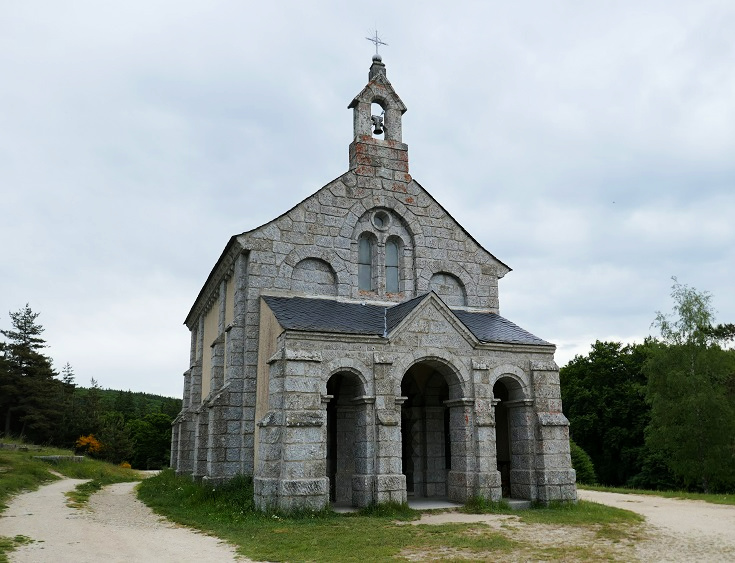
Chapelle Saint-Roch
Although this section of the Chemin de Saint-Jacques is much quieter today, it is easy to imagine a time when the hospice (destroyed long ago), fountain and chapel were busy meeting places for hundreds of pilgrims grateful for a bed, some food—and a draught of blessed water to drink and to tend their tired and battered feet.
FAST FACTS
Which long-distance walk in France visits Le Sauvage?
Chemin de Saint-Jacques du-Puy (Stage 1: Le Puy-en-Velay to Aumont-Aubrac)
Look inside the CHEMIN DE SAINT-JACQUES (PDF) guidebook
Where is Le Sauvage, France? Find it on Google maps
Le Sauvage is located 61.5 kilometres (38.4 miles) along the Chemin de Saint-Jacques. If you are following my relaxed, ‘start slowly’ itinerary, you’ll arrive mid-morning on the fifth day of walking, but if you are pressed for time, Le Sauvage can be reached quite comfortably in three days without sacrificing any of the highlights.
Click through to find my suggested itinerary for all five stages of the walk or click through onto each of the five stages to find faster itineraries.
If you prefer to set your own agenda, I share the steps I take to plan my itinerary on any long-distance walk (using the Chemin de Stevenson as a case study)
Transport options to and from Le Sauvage
The Compostel’Bus service runs every morning, connecting many villages along the path between Le Puy-en-Velay and Conques and making the return journey each afternoon. Although it does not stop at Le Sauvage, it does stop at Villeret-d’Apchier (8 km/5 mi before Le Sauvage) and La Roche (3 km/1.8 mi beyond Le Sauvage). Other stops include Montbonnet, Saint-Privat-d’Allier, Monistrol-d’Allier, Saugues, Les Faux, Saint-Alban-sur-Limagnole, Aumont-Aubrac, Nasbinals, Aubrac, Saint-Chély-d’Aubrac, Saint-Côme-d’Olt, Espalion, Estaing, Golinhac, Espeyrac and Sénergues.
Tourist Office in Le Sauvage
There is no Tourist Office in Le Sauvage but the reception area and store provides a lot of useful information on the surrounding area.
Accommodation in Le Sauvage
Accommodation is available at—
Le Sauvage en Gévaudan (41 people), bookings can be made through this link.
Accommodation can also be found on either side of Le Sauvage at—
Chazeau (4 km/2.5 mi) before Le Sauvage
Gîte des Noisetiers (3 rooms, 8 people)
Gîte de la Virlange (2 rooms, 6 people)
Le 1828 (2 rooms, 4 people)
Les Faux (8.4 km/5.3 mi) past Le Sauvage (+ 1 km detour)
L’Oustal de Parent (14 rooms, 45 people)
Les Séjours de Lalie (2 rooms, 4 people)
How to book accommodation in French
Where to eat in Le Sauvage
Le Sauvage serves lunch every day, but is often busy and advance reservations are recommended. They also stock a wide range of local produce and cold drinks—perfect for a relaxing stop at the picnic tables outside.
Practical tips for long-distance walking—preparation, packing and avoiding blisters
Purchase the Chemin de Saint-Jacques (PDF) guidebooks
Purchase five (PDF) guidebooks covering Le Puy-en-Velay to Saint-Jean-Pied-de-Port
